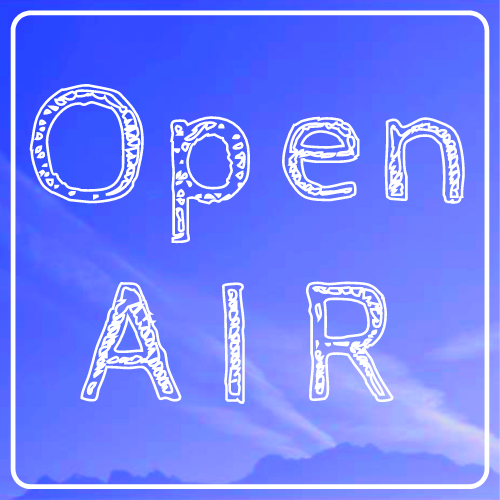Conversation with April Werle
How was your art practice impacted by the pandemic?
Before the pandemic, my practice was focused on murals. Because the pandemic slowed my mural practice, I’ve had the chance to focus on my paintings and build an in-studio rhythm that I didn’t have when I was moving from wall to wall. I’m excited for the vaccine to circulate so that mural festivals open back up and I can focus on painting more walls!
What was your experience like collaborating with another artist(s)?
I was super excited to get Marc-Anthony’s sculpture in the mail, but I loved it so much before I painted it, it was really hard to add anything to it.
The last six to eight months has also been incredibly emotional as I shift in my personal life. I painted a BIPOC mural for the ZACC’s mural alley alongside some other amazing artists, and the experience initiated a lot of healing and self reflection that I had been suppressing about my racial identity for a long time. And that has been informing and shifting the style of the backgrounds I place these hand characters in.
Between our two pieces, you can see the slight imagery/style shift in the painting I sent Marc-Anthony, and the sculpture I painted that he sent me.
What was a success to come from the CoLab project?
I really enjoyed experiencing another artist’s work that I would probably not have access to otherwise. Working so intimately with Marc-Anthony’s sculpture revealed a lot about his process, and the energy he holds when working on a piece. I think the compare and contrast was really insightful, and I loved the combination of contrasting creative energies.
Tell us about your artistic background?
In the last six months, I’ve been on a bit of an emotional rollercoaster, reconnecting with my Filipino roots. My mother is an immigrant from Cebu, Philippines, an island of the Visayas. I grew up eating Filipino food every day, hearing Cebuano and Tagalog every day (two of over 100 languages in the Philippines), and at one point in my life speaking both these languages as much as I understood and spoke English.
Because I am my mother’s oldest daughter, there was an immense pressure for me to succeed and assimilate into White culture, even though my mom taught us to be proud of our heritage. As I became an adult, I had completely separated my identities in my professional life. My school/work life was a White and/or racially ambiguous version of myself and my home life was my Filipino self.
Even after college, I struggled to represent myself fully in my artwork. I felt like I was always watering myself down but I couldn’t figure out why. And suddenly in the last few months, I’ve realized that bringing in Filipino motifs into my work is filling this void.
To draw inspiration for my work and feel more complete, I’ve been relearning my family’s tongue Cebuano, and the national language Tagalog, cooking Filipino food with my partner, reading Filipino authors of the diaspora, listening to Filipino American podcasts, listening to Indie Filipino music, watching Filipino and FilAm movies. Which is all leading to growing this amazing online creative community of support regarding the Filipino diaspora experience.
How would you describe your work?
I place hand characters in surreal landscapes. The hands carry the narrative of the piece, interacting or reacting to their environments.
BIO: April Villas Werle is a First Generation Filipino-American Artist and Muralist who has been transforming walls internationally. Werle’s colorful murals and works on panel offer short narratives inspired by our perceptions of reality. Werle decorates her works-on-panel with patterns inspired by Visayan tattoos from the Filipino spiritual practice of Batok, alongside her recurring hand-characters that are existing and interacting within their fantastical landscapes. Each hand-character drives themes of coming-of-age tales, exploring how we create our realities as we discover our own true identities.



